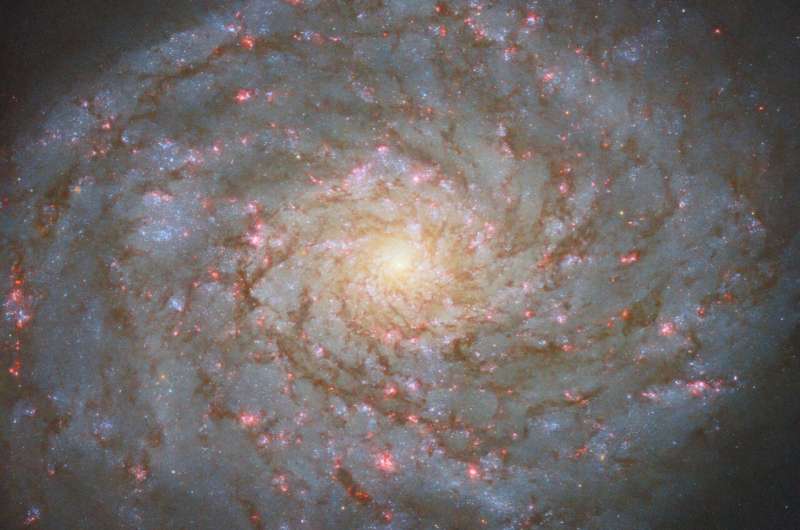This article has been reviewed according to Science X's editorial process and policies. Editors have highlighted the following attributes while ensuring the content's credibility:
fact-checked
trusted source
proofread
Hubble captures jewel-bright spiral galaxy NGC 4689

This NASA/ESA Hubble Space Telescope image shows the jewel-bright spiral galaxy NGC 4689, which lies 54 million light-years from Earth in the constellation Coma Berenices. This constellation has the distinction of being the only one of the 88 constellations officially recognized by the International Astronomical Union (IAU) as one named after the historical figure, Queen Berenice II of Egypt.
The Latin word "coma" references her hair, which means that NGC 4689 lies in the hair of a queen. Some people of Berenice's time would have meant this quite literally, as the story goes that her court astronomer thought that a missing lock of Berenice's hair had been catasterized (a word meaning "placed among the stars") by the gods: hence the name of the constellation, Coma Berenices.
NGC 4689 holds an interesting—albeit less royal—place in modern astronomy. The universe is so incredibly vast that at a distance of 54 million light-years NGC 4689 is relatively nearby for a galaxy. This image includes data from two sets of observations, one made in 2019, the other in 2024 , and both are part of programs that observed multiple "nearby" galaxies.
The 2024 observing program is an interesting example of how Hubble—an extraordinarily productive telescope for more than three decades—and the James Webb Space Telescope complement each other. Observations collected by Webb stand to transform our understanding of how galaxies change and evolve over time, by providing infrared data at an unprecedented level of detail and clarity. However, ultraviolet and visible light observations from Hubble—such as those used to create this image—complement Webb's observations.
In this case, the Hubble data offer a more accurate assessment of the stellar populations of nearby galaxies, which is crucial to understanding their evolution. Hubble and Webb observations play an important role in developing our understanding of how galaxies form and evolve, and observations of NGC 4689 are a valuable part of that quest for knowledge. In fact, Hubble featured an image of the galaxy before, in 2020.
Provided by NASA




















